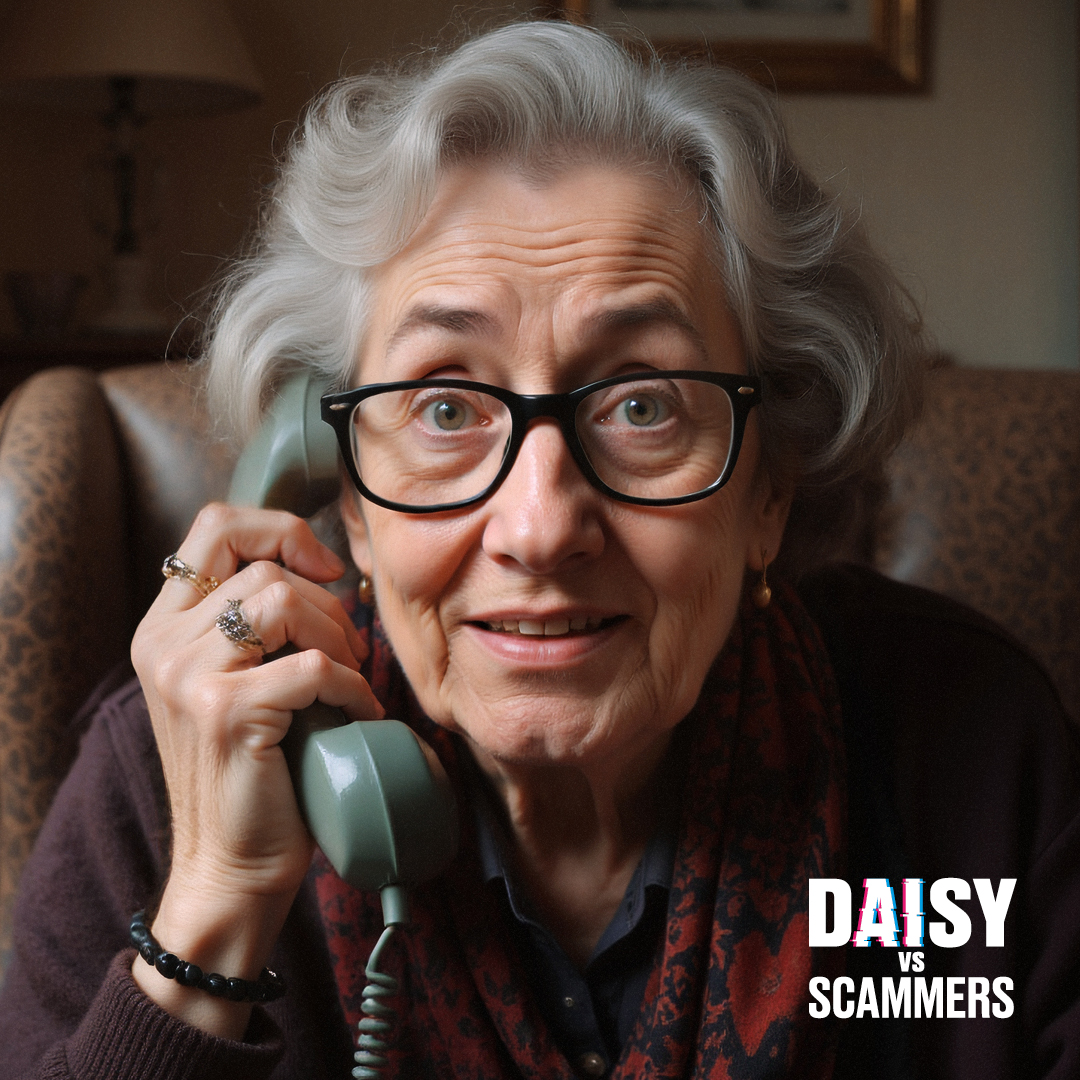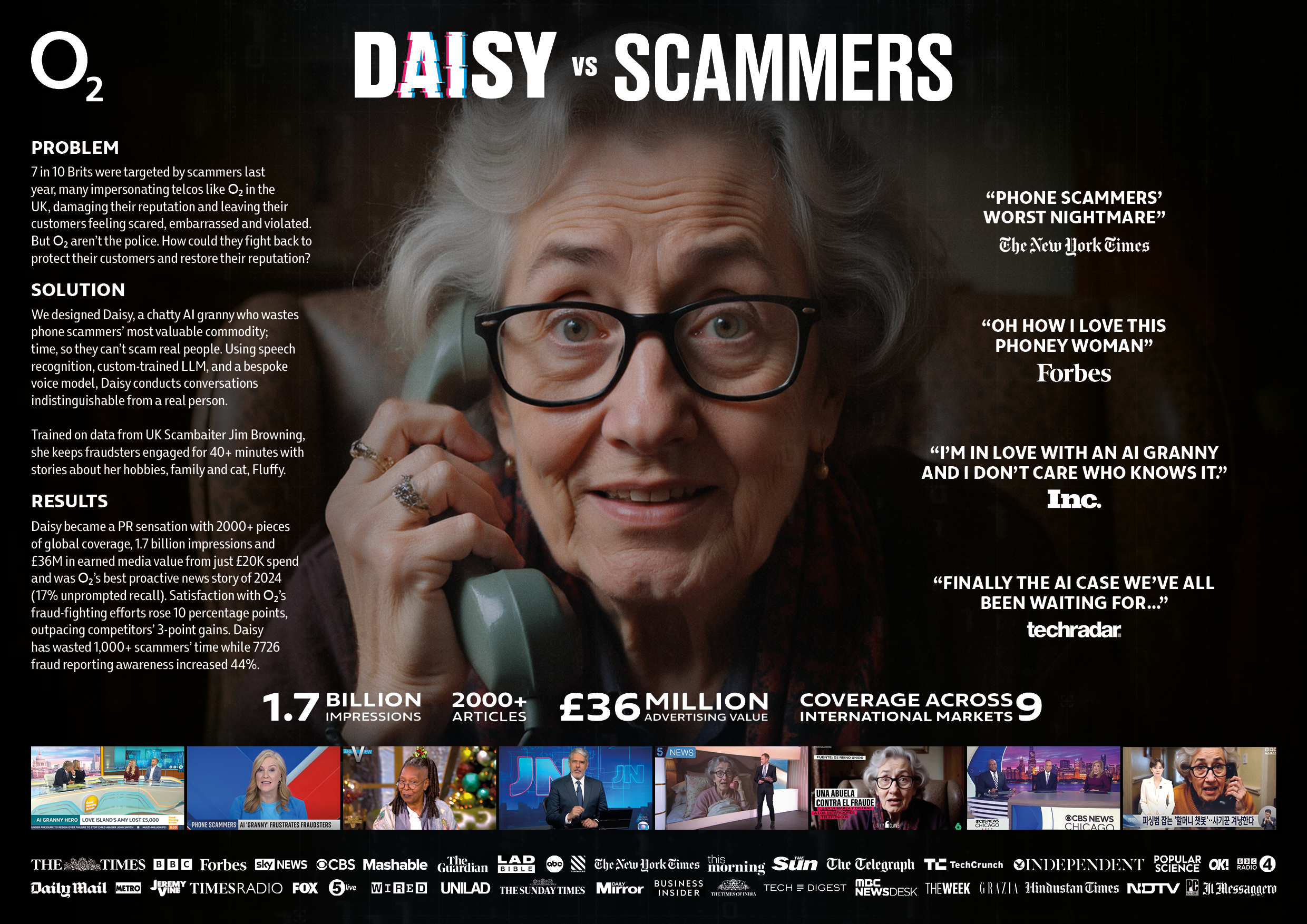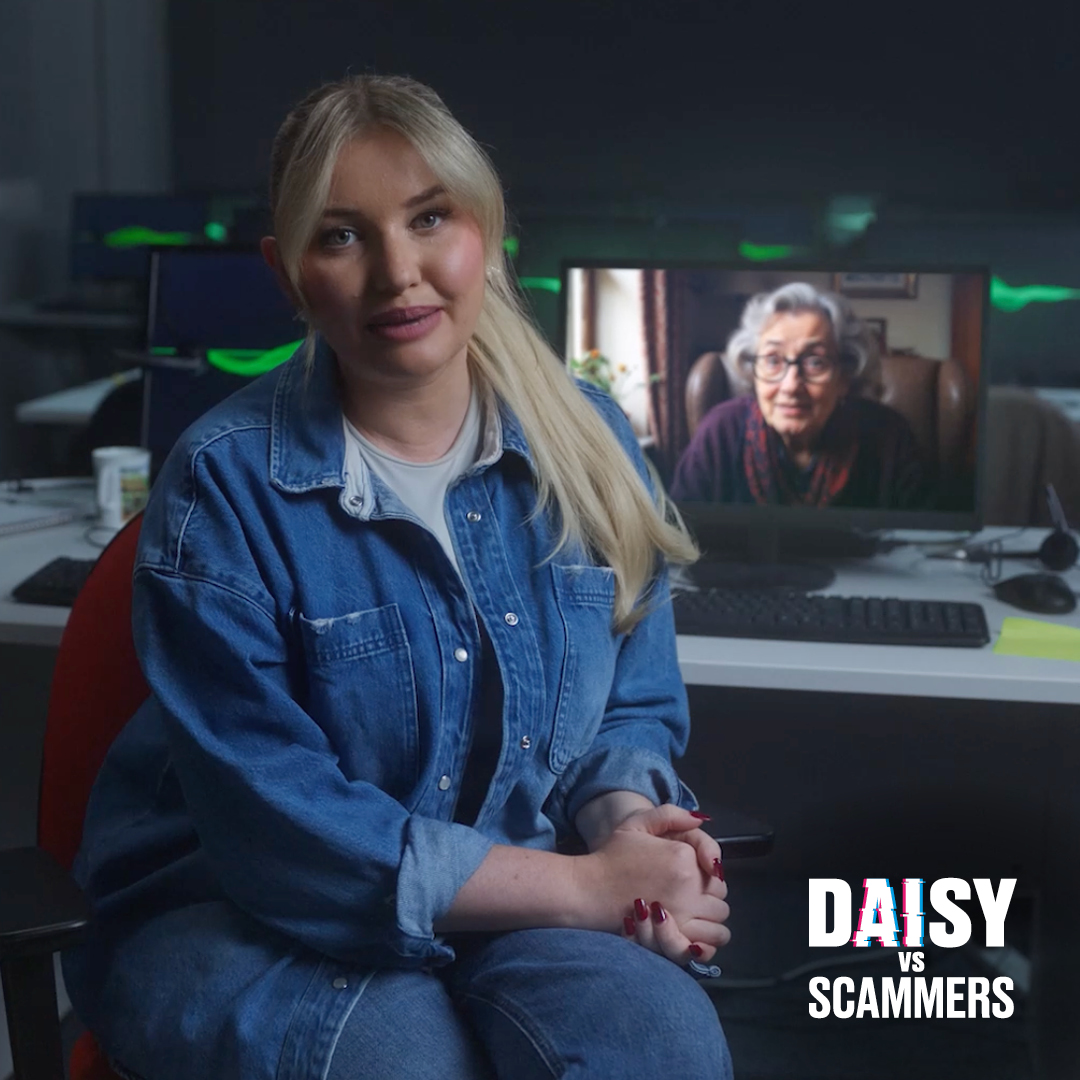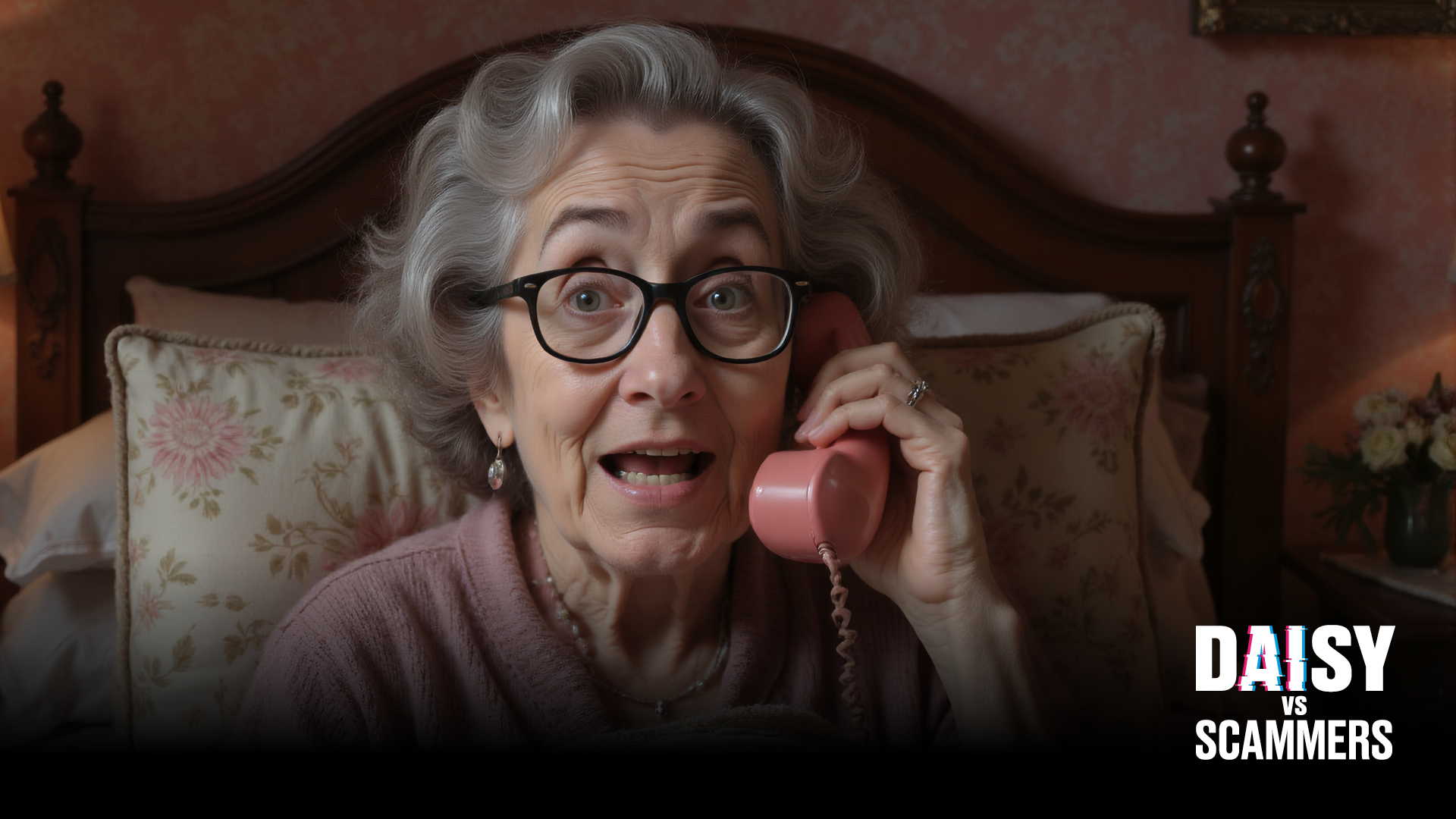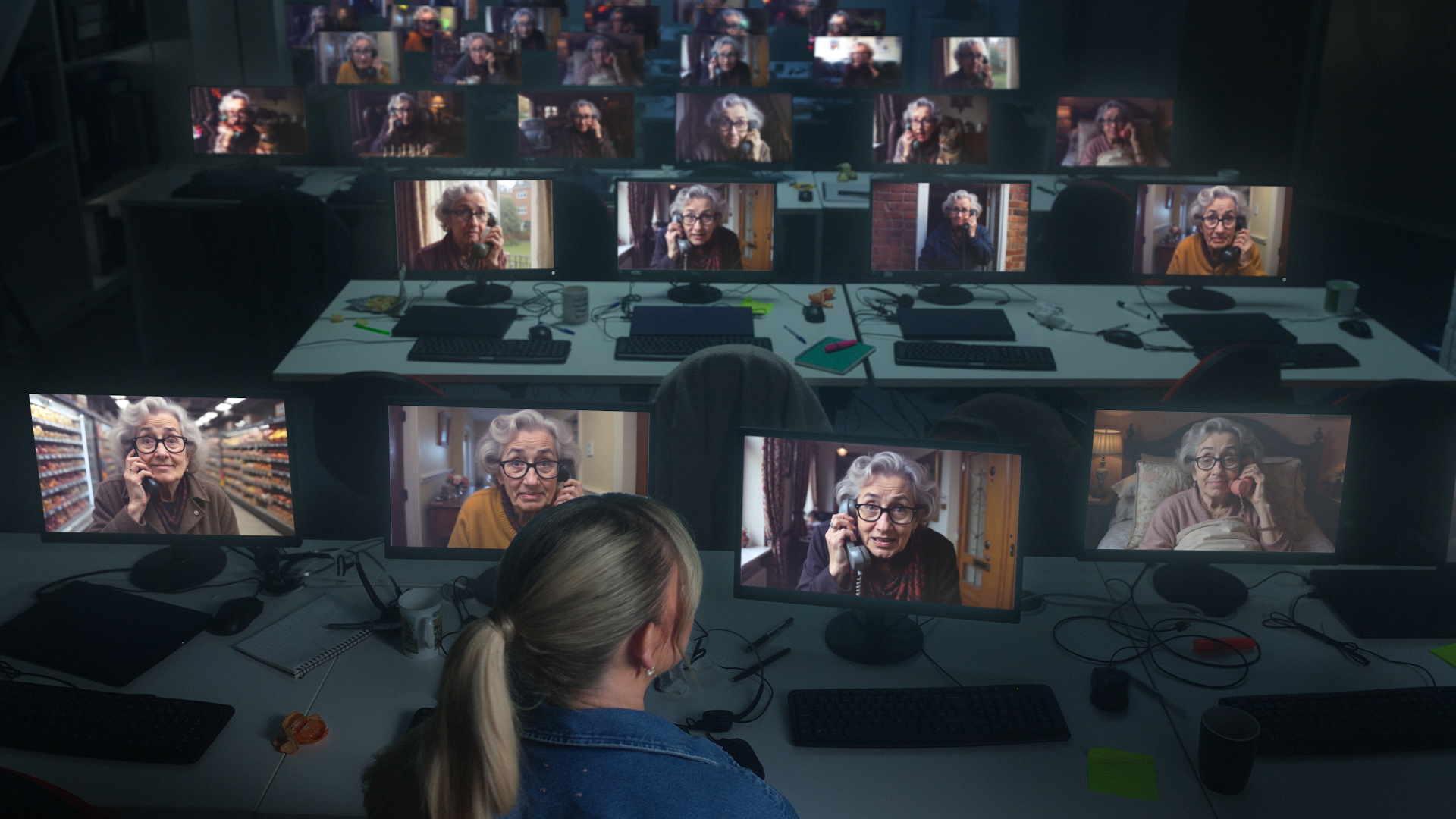
With 73% of Brits targeted by scammers in 2023, mobile fraud had become a national epidemic. As one of the UK’s largest telcos, O2 had invested in backend AI tools to fight fraud, but public perception hadn’t caught up. Only 24% of customers were satisfied with its anti-fraud efforts. At the same time, AI was making headlines for all the wrong reasons: fears of deepfakes, misinformation, and a lack of humanity.
We needed to flip both narratives: show O2 as a champion for customer protection and prove that AI could be used for good.
We had 5 main objectives:
Drive national reach and awareness of phone fraud
Improve perceptions of O2’s fraud protection efforts
Spark positive sentiment around AI through a relatable, humorous use case
Raise awareness of the ‘7726’ scam reporting number
Actually waste scammers’ time, preventing real victims
To fight phone scammers effectively, we didn’t want to just raise awareness or create educational comms around scam prevention that put the onus on customers to avoid scams. We wanted to fight back; we can’t arrest them because, after all, we are a telco, not the police, but we can waste their time.
Enter Daisy: a sweet, 78-year-old grandmother with a fondness for knitting, cats, and her late husband Norman. But Daisy isn’t real; she’s an AI-powered scambaiter, trained to hold real conversations with real scammers, keeping them occupied and unable to target actual victims.
What made the campaign exceptional wasn’t just the character, it was the system that powered her. Daisy was built from a sophisticated stack of AI tools that worked together in real time. Calls were routed through Vapi, speech transcribed by Deepgram, responses generated by a custom-trained GPT-4o Mini model, and audio brought to life through ElevenLabs, which replicated the voice of a colleague's grandmother. Daisy responded within milliseconds, fast enough to hold a natural phone conversation with a scammer and subtle enough to sound truly human, trained on real scam calls.
But building the tech was only half the battle. For Daisy to have an impact, she needed to feel real. We rooted her in emotional authenticity. Daisy wasn’t a deepfake or a gimmick; she was crafted with humanity at her core. Her personality was based on a real woman named June, whose cadence, quirks and stories were used to train the system. She had a cat named Fluffy. A favourite recipe for lemon drizzle cake. Grandchildren she adored. These details were not fluff; they gave Daisy the humanity and depth of character that helped her fool thousands of scammers into thinking they were speaking to a vulnerable older woman.
Some scammers would stay on the line for 30 to 40+ minutes. They’d repeat themselves, grow frustrated, try new tactics, all while Daisy meandered through tales of her wartime ration book or how she accidentally locked herself in the airing cupboard. Every second wasted on Daisy was a second they weren’t targeting real people.
But the true genius of the campaign came next. We turned Daisy’s scammer conversations into content.
Instead of static public service announcements or dull safety tips, we created a new kind of entertainment: revenge content with purpose. We edited real scam calls into short-form videos, perfectly suited for TikTok, Instagram Reels, YouTube Shorts, and Reddit. They were funny. Unexpected. Cathartic. Daisy didn’t just protect the public; she made them laugh. And in doing so, she created something no other telco had: shareability.
To amplify her reach, we partnered with Amy Hart, an ex-Love Islander and real-life scam victim, who became the campaign’s spokesperson. We also collaborated with Jim Browning, the UK’s leading scambaiting YouTuber, whose expertise shaped Daisy’s logic and response patterns. The campaign was seeded organically, with no media hype or teaser trailers. We let Daisy’s charm and the scammers’ frustration do the talking.
Daisy didn’t just talk the talk. She walked the walk, and she walked all over scammers.
Reach
Daisy earned over 1,800 pieces of media coverage in 9 countries, including The New York Times, Sky News, and even Whoopi Goldberg’s talk show. With 1 billion earned impressions and 17% unprompted recall, she became O2’s most famous campaign of the year.
Reputation shift
Customer satisfaction with O2’s fraud protection jumped 10 percentage points, from 24% to 34%, significantly outpacing competitors like EE (+3%). Daisy rebranded O2 from a passive telco to an active fraud-fighting ally.
Positive sentiment
The campaign delivered a +6.7% uplift in brand favourability, surpassing O2’s benchmarks — and received 100% positive media coverage, a rare feat for an AI-led campaign in a sceptical media landscape.
Behavioural change
Awareness of the scam-reporting number 7726 rose from 18% to 26%, with an 8% month-on-month increase in reports during the campaign.
Real impact
Thanks to over 1,000 scam calls received, Daisy helped save the British public an estimated amount of over £3 million per year in potential fraud prevention (annual adjusted equivalent).
In short, Daisy proved that AI can be useful, brands can be protective, and even a fictional granny can become a national hero.
